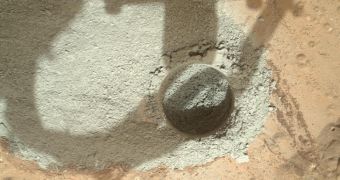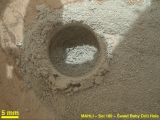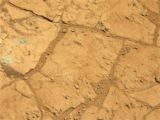Curiosity has now drilled into a Martian rock for the first time, though this too was a test and no usable sample was recovered.
Still, the rover bored about 2 centimeters (0.8 inch) into a rock using both percussion and rotation. It then retracted its drill and marveled at what it achieved.
Curiosity will have to drill deeper than that to be able to recover rock samples, to be analyzed by its two main instruments, CheMin and SAM.
The team will now inspect the material uncovered by the drilling process visually to assess whether to go ahead with a full drilling in the same location. If everything is in order, that should happen in the next few days.
The rock chosen by the NASA team is dubbed John Klein and showed some interesting characteristics, particularly veins that look like they were made in contact with water, in Mars' distant past. This makes it the perfect target for analysis.
Material uncovered in the full drilling will be sent to Curiosity's two main chemical analysis instruments, Chemistry and Mineralogy (CheMin) and Sample Analysis on Mars (SAM), which will be able to determine the makeup of the rock and provide conclusive evidence on whether water flowed on Mars.

 14 DAY TRIAL //
14 DAY TRIAL // 

